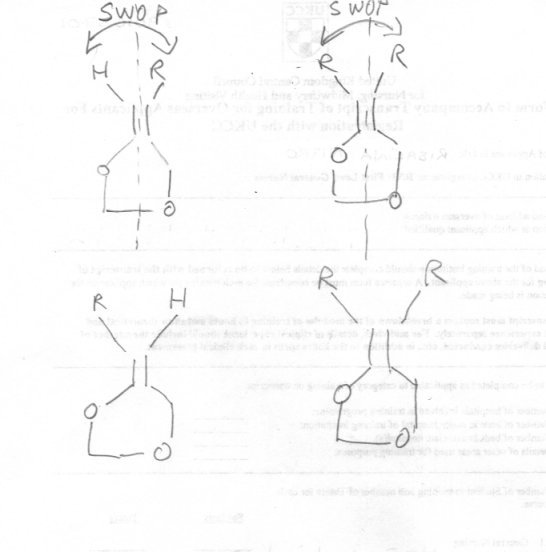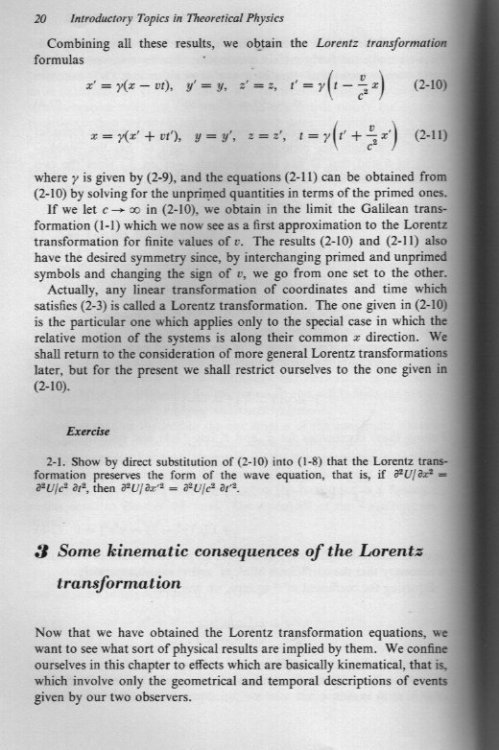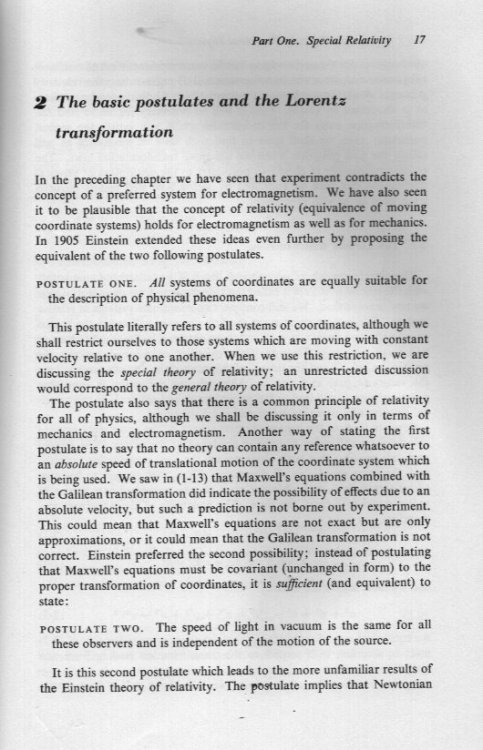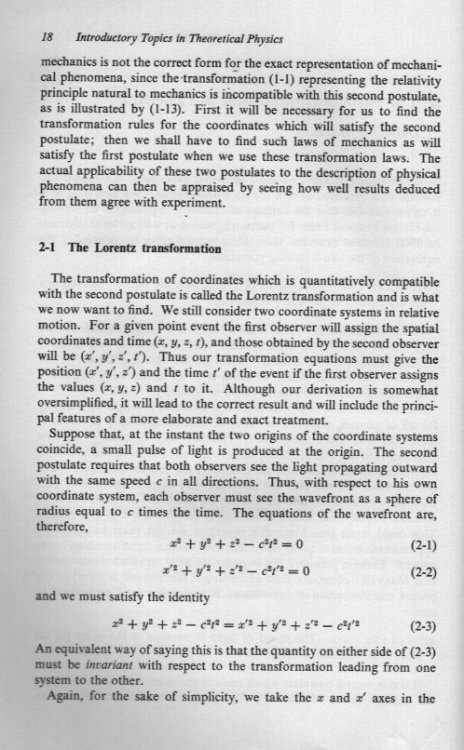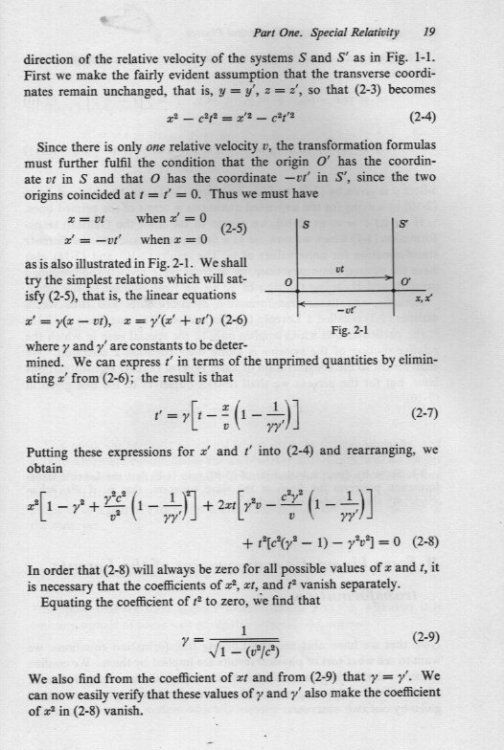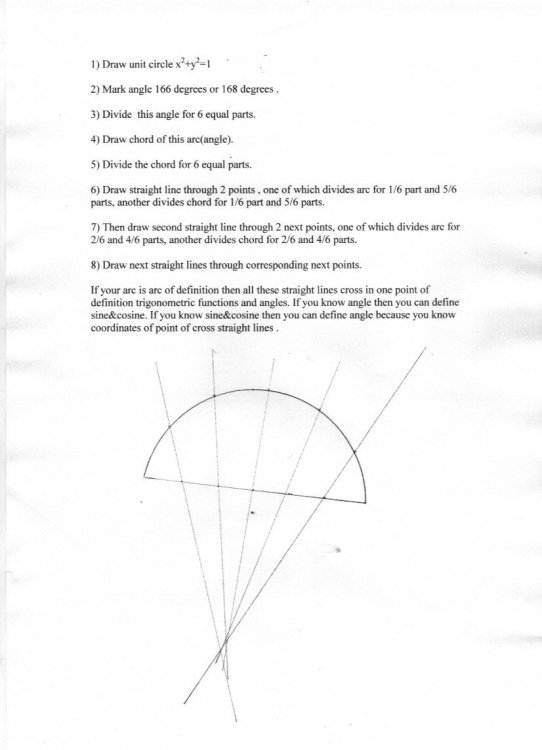-
Posts
18314 -
Joined
-
Last visited
-
Days Won
104
Content Type
Profiles
Forums
Events
Everything posted by studiot
-
I thought a picture was worth 1000 words ? The left hand one corresponds to your left hand one. The (top) end has one hydrogen and one alkyl group as shown. Swopping these over generates a different isomer since the R group is now closer to the nearest oxygen. In the right hand picture swopping two identical R groups does not alter the relative disposition of constituent atoms - they are the same molecule from front and back.
-
-

Another way of looking at Special Relativity
studiot replied to RAGORDON2010's topic in Speculations
You seem to have posted all this before and been told several times that modern authors have streamlined the presentation of Relativity over the now more than a century since inception. Mordred and Marcus in particular ( +1) have tried to point to presentations that contains earlier and simpler theory as limiting cases so the theory of Newton and Galileo is a limiting case of the Special Theory which in turn is a limiting case of the General theory. We would expect this type of progression to continue wiht future developments. Here is a mid 1960s version that demonstrates this, due to Wangsness. You should take away with you this development along with the clear exposition of how it relates to Lorenz and modern versions of the two postulates of SR The math is not too difficult. But he does provide proper reasoning for each step taken (not always shown in shallow modern treatments). I will just post the basic bit here, but he goes on in similar vein to eplore all the aspects of SR, inlcuding the electromagnetic ones. -
Like most members here I understood you wish to discuss a non approximate definition of trigonometric functions. I understood your 'arc of definition' to be an arc that somehow defines a trigonometric function. Is this the case or do you mean something else ? Schoolboys are taught exact and perfect definitions of trig functions. What is wrong with these?
-
Thank you for your reply. This is exactly what is puzzling myself and other members. You consistently speak of 'definition', but you are using quantities you are trying to define in your definition. (A computer would return a 'reference to undefined quantity' error) I haven't yet checked your algebra for consistently - that will take time. But you can't use something (eg the sine function) to define itself.
-
Sounds good, but The cables themselves do not need to be brought up to non ice temperatures, particular the inner ones. I think the heat transfer coefficient between the outer surface of the sheath and the environment (ie the ice) will be much greater than the transfer coeficient between the cables and the inner surface of the sheath. I don't know if the sheath has an inner low friction coating which is also thermally insulating, but low friction is required between the cable and the sheath. Further the outer of the sheath is in good physical and therefore thermal contact with the ice, but is not in such good contact the the outer part of the cable. So less heat wil be required heat only the sheath and this heat will pass more quickly to the ice if the sheath is heated directly rather than indirectly via the cables.
-
Here is my attempt to follow your instructions. I have used 168 degrees since this is actually divisible by 6. The arc looks like semicircle, but is actually 168o. Is joining the points as instructed supposed to create straight lines that all meet at one point? How does this help define a sine ? And more particularly the sine of what angle? It is clear you have several members interested in a technical discussion about this so it is in your own interests to engage as fully as you can.
-
Two points. Queensferry is in the climatic regime discussed in the BBC programme. That is frequent alternation between just below and just above freezing. Champlain is in a much harsher environment. You don't have to heat all the cables, just the sheaths.
-
I think Dima is referring to the description of sin and cos as 'circular trigonometric functions' and their relationship to a rotating radius vector, as opposed to hyperbolic trigonometric functions. This is also linked to the use of angles to define sides of spherical triangles. But it would be nice to have a better answer to my question since it is a lot of work to investigate each aspect in depth.
-
I still don't know what you want ? There are many 'definitions' of sinx and cos x. Obviously they all define the same things. So do you want me to tell you what sin and cos are? Or do you want a single formula that will calculate the value of sin or cos for any x. Remembering this value will only be 'correct' to a specific number of digits? Or do want ways of obtaining exact numeric values for any angle.? Remembering there is no single way to do this for every angle. Here are some single formulae in the form of continued products which converge at or before infinity. [math]\sin x = \left( {1 + \frac{x}{\pi }} \right)\left( {1 - \frac{x}{\pi }} \right)\left( {1 + \frac{x}{{2\pi }}} \right)\left( {1 - \frac{x}{{2\pi }}} \right)\left( {1 + \frac{x}{{3\pi }}} \right)\left( {1 - \frac{x}{{3\pi }}} \right)...[/math] [math]\cos x = \left( {1 + \frac{{2x}}{\pi }} \right)\left( {1 - \frac{{2x}}{\pi }} \right)\left( {1 + \frac{{2x}}{{3\pi }}} \right)\left( {1 - \frac{{2x}}{{3\pi }}} \right)\left( {1 + \frac{{2x}}{{5\pi }}} \right)\left( {1 - \frac{{2x}}{{5\pi }}} \right)...[/math]
-
I have just watched a Chammel 5 documentary on the new Champlain bridge in Montreal, which opened last July. Your photo above shows the cable sheath at Queensferry. It is interesting to compare this with a ribbed de-icing sheath, adopted in Montreal. Apart from the expected journalistic hype, the programme highlighted some interesting points in current bridge design and construction practice.
-
I must conclude that no expert on this forum has a mathematical approach to suggest to me. When I was working in Saudi Arabia a desert Arab said to me in all sincerity Our camels don't have speed limits or traffic controls, so why should our motor vehicles. Would you allow someone who has only ever driven a farm cart the keys to your Porsche?
-
Your Google translated definitions seem very oddly phrased and over complicated. Can you explain simply what you are trying to do? All trigonometric functions are already very well defined.
-

COVID-19 outbreak (caused by SARS-CoV-2)
studiot replied to ScienceNostalgia101's topic in Microbiology and Immunology
Well here is the art world's rsponse; the title says it all https://www.bbc.co.uk/news/entertainment-arts-51672753 -

An extension of Quantum Field theory concerning universal expansion
studiot replied to Kurt Mueller's topic in Speculations
+1 Kurt, if you would Indicate your level of maths and physics, (I am not a cosmologist) I will try to add some suitable references to Mordred's. -
https://www.bbc.co.uk/news/uk-england-suffolk-51674057 Yes the council should have fixed this long ago, and yes 45 weeks is an inordinately long time to provide a simple fix (I remember managing a similar one in one week in Somerset). But to drive over a 10 foot cavity ? Perhaps our resident Bridge Engineer from Aberdeen has some thoughts, Peter ?
-
Sorry I can't help you with that, but I am not at all suprised to hear that it is the case. Brain surgery is, after all, a step or two up from rocket science in difficulty and toughness. +1 My thoughs go with you for on the rest of your post.
-

An extension of Quantum Field theory concerning universal expansion
studiot replied to Kurt Mueller's topic in Speculations
Not darn it but xciting ain't it. +1 -
I seem to remember a thread? a few years back where there was a summary How to write an effective opening question. Not long but a sticky paragraph that someone could point to. Yes I agree such an environment forms an excellent training ground. +1 For all the good it does, critical thinking has long been part of the national Curriculum in the UK
-
Thanks. I was wondering about first timers who seem particularly prone to this. I believe some sort of information appears about their first 5 posts ? Perhaps some extra guidance could be issued with that ?
-
This suggestion was inspired by the recent strengthening of the control over spurious threads and the waste of time they generate. Whilst I fully endorse that, I would like to note another perennial timewaster for consideration. (Too) Many original posters think we are mind readers or whatever and supply far too little or too sloppy information instead of a properly thought out question. Sometimes a simple "Does the bathwater always spin round the same way as it empties down the plughole ?" is all that is necessary. But already this morning I see at least two questions with insufficient information to frame a proper answer. If the OP expects us to put careful thought into answering, do they not owe it to others to put the same into their question? I don't want to discourage people but how can we encourage them to asked posed questions?
-

cannot transmit static electricity through wire
studiot replied to Eiot's topic in Classical Physics
That's a pretty picture, but perhaps if you were to explain exactly what you are trying to do we could help you. What, for instance, is connecting the two pieces of foil? If you have one charged object and suddenly connect it to another that is not charged, the available charge will spread out over both objects (and the connecting wire) so reducing the charge density all over (to about 40% from your picture). Also foil has a large surface area so will leak charge very quickly to the atmossphere, especially if the air is slightly damp. -
Oh dear, now I am getting confused. Of course zero points are 180o apart, as are positive and negative zones. Positive and positive or negative and negative zones are 360o apart. All this argument is rather silly and besides the point. Sine waves are not fractal so why did the OP raise them (I didn't) ? In fact I fail to see any connection between the title of this thread and anything else the OP has said so far.
-
So who wrote (invented) this ? I said Which is true : 3 items cannot all be 90o apart unless they are on three separate cartesian axes, which the intems listed are not. If, of course, the OP is talking about "like for like", he is still not correct. Yes zero points are 90o apart in angular distance along the angular axis. But what angle are they part form either positive or negative zones? Yes positive zones are 90o apart from negative zones. But positive zones are 180o apart for the next positive zone. So I maintain that only two out of three are possible.


